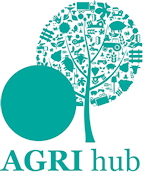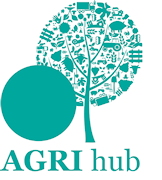
The dairy farming sector is in crisis. Low milk prices, global oversupply, and a retailer price war mean confidence is at rock bottom. But with signs of an upturn in sight, what does the future hold?
Dairy farm incomes have been under intense pressure over the past couple of years, with average milk prices reaching a nine-year low in June. As a result, 621 dairy producers have quit the industry over the past two years across England and Wales, with the South West losing almost 170 dairy farms.
That is a significant drop for a region that boasts almost a third of all dairy and beef cattle in England, and produces 10.3bn pints of milk a year. According to Defra, the average dairy farm contributes around £550,000 to the economy each year, equivalent to £1.5bn across the South West. Haemorrhaging dairy producers at such a rate is therefore extremely worrying for more than just the farmers themselves.
According to John Allen, Managing Partner at Kite Consulting, it’s the longest downturn the industry has experienced in over 20 years. “Prices have been sliding since April 2014,” he says. “There was a small blip in 2015 but it’s been a very poor couple of years.”
To produce a litre of milk costs farmers an average of around 28p/litre, but farmgate prices have been below that level since December 2014, reaching a low of 19.91p/litre in June this year. “Many farmers were receiving a lot less than that, with spot prices falling as low as 10-11p/litre in the spring,” says Mr Allen.
So what has been behind the downturn? In essence, it’s basic supply and demand, but on a global scale. High dairy commodity prices in 2013 encouraged farmers to increase milk production around the world, and in 2015 the EU abolished milk quotas. With this cap on production lifted, EU milk output in 2015/16 – buoyed by good grass-producing weather – jumped by 4% year-on-year, to almost 150bn litres. Over the same period, demand was waning in China, and Russia banned imports of EU dairy products, explains Mr Allen.
Falling milk prices tend to trigger a decline in milk production, and that has now been seen across the globe, with New Zealand production expected to drop 5-10% this year, EU supplies running 2-3% below last year, and UK deliveries some 8% down in July, year-on-year.
And prices are beginning to recover. Between 19 July and 16 August, the weighted average price of dairy commodities at the GlobalDairyTrade auction soared by 20%, to $2,731/t (£2,062/t) – its highest level since October 2015 and 25% up on the low set in April this year.
Helped by the weaker Pound, UK wholesale prices have also jumped sharply, with cream, butter and skimmed milk powder values in August up 67%, 71% and 34%, respectively, on the year, says Mr Allen. AHDB Dairy’s market price indicators, based on returns from the actual wholesale market place, estimate that farmgate prices (excluding transport to the dairy) should have been at 26-28p/litre in August, compared to an estimated average of 20-21p/litre.
Historically, there has been a close relationship between these market indicators and the average farmgate milk price, albeit with a three-month delay. With the market indicators having increased every month since April, farmers should therefore have started seeing better farmgate prices by the start of August, and should be seeing further improvements throughout the autumn.
But processors appear to have been woefully slow to pass back those improved returns to farmers, sparking a spate of protests across the country and in the South West. “We need to get the money back from the market as quickly as possible,” says Andrew Branton, chairman of the NFU’s South West dairy board. “We are all suffering, and if we lose any more producers then we risk exporting the industry.”
With the expensive winter housing period for dairy cows getting ever closer, the situation is becoming increasingly desperate, he adds. “After the extended period of low prices, any ‘fat on the bone’ has well and truly gone and the kitchen drawer is bulging with invoices waiting to be paid.”
Müller and Arla are two of the largest milk processors in the South West, and Müller was targeted by Farmers For Action after failing to increase its milk prices in September. “While Müller’s farmer board sit back and accept no price increase for September, farmers and farmworkers seek record amounts of monies from charities,” says FFA chairman David Handley. “This is a disgrace. The company shows no corporate responsibility or any respect for its hard working non-aligned producers.”
However, Müller has since announced a 1p/litre price increase for farmers on its standard contract from October. “While there remains a long way to go before farmers’ milk prices recover to a level which is sustainable, this is an important first step and acknowledgement that the markets are looking more positive,” says Roddy Catto, chairman of the Müller Milk Group farmer board.
“Müller’s focus on adding value to milk meant that when the markets hit their lowest point we were not fully exposed to the very low returns being received by others in our industry. Nevertheless, this has been an extremely painful and challenging period for Müller suppliers and we now hope to see a sustained recovery.”
Arla Foods amba – which pays the same price to all its farmers across seven different European countries – increased its standard UK price by 1p/litre in September, reflecting the firmer markets. “As a farmer-owned business we do not hold money back from our farmers,” says a spokeswoman for the co-operative. “Any benefit goes back to our farmers, based on market returns and forecasts.”
So is this the start of another boom in the market? Kite Consulting’s John Allen isn’t convinced it’s as easy as that. “We would expect prices to continue to increase, probably by 1p/litre a month well into next year. But we won’t see a recovery in milk output until prices exceed 25-27p/litre, so I expect production will be very tight into next year,” he says.
It’s also going to take a long time for farmers to recoup their losses and find confidence in the industry, he warns. “Our clients lost over 2p/litre last year and will lose a further 2-3p/litre this year. Even with prices now rising the average price this year will be worse than 2014/15, and I think we’ll see an increasing number of farmers selling up next year as cow values recover.”
It will also take some time before consumers see higher cheese and butter prices on the shelves, adds Mr Allen. “Supermarkets have been selling a lot on deals, and those promotions are going to have to come to an end at some point. But competition between retailers is fierce: They won’t be able to stop the global market from working but they will try to hold it back.”
Stephen Wyrill, chairman of the Tenant Farmers Association, remains convinced the dairy supply chain is not operating efficiently. “Some retailers and processors are using their dominant positions within the supply chain to protect their own returns and profitability without ensuring a fair return to primary producers,” he says. “These issues need a long-term solution.”
He is calling for reform of the Groceries Code Adjudicator so it can act on relationships throughout retail supply chains not just between processors and retailers. “The Adjudicator should also report on the share of the retail price of milk and other grocery items received by each part of the supply chain. This price information would inform contractual negotiations between farmers, processors and retailers.”
At least the industry is benefitting from consumer support, with both Morrisons’ and Asda’s premium farmer milk brands selling well, says Mr Allen. “The public want to show their support for farmers, and sales have exceeded expectations when they have been given that chance.”
Case study
James Frankpitt’s family milk 300 dairy cows at Rix Farm, Tiverton, Devon, and like all dairy producers they have been badly affected by the prolonged low milk prices. “It’s been going on for 18 months now, which has been very difficult for the business and for the family,” he says. “Times are tough and we’re trying to save wherever we can, which is stressful. With the best will in the world that does impact on family life.”
Although input costs have dropped, milk prices have fallen further, sending the business into a long downturn. “Cash flow is very difficult – we’re keeping the bank informed with budgets and predictions to cover borrowings. There are other farmers who are in far worse situations with far worse milk prices – I just don’t know how they have managed,” he adds.
Although there is now a sign of improvement in the dairy market, it’s going to take a long time to get back to break-even, let alone recoup the losses, warns Mr Frankpitt. “Any investment has stopped, and the cutback in inputs may have a knock-on impact on productivity in the longer term, whether through reduced fertility or yield.”
Like most farmers, Mr Frankpitt tends to roll a large proportion of any profits back into the farm, to improve cow welfare and efficiencies. “The UK dairy industry is one of the world leaders in terms of welfare and standards. We are constantly striving to improve, as the cows come first,” he says. “We want to have happy, healthy cows, and we need to invest to do that.”
A rise of just 1p/litre in milk price equates to £30,000 a year at Rix Farm, and Mr Frankpitt is keen to urge retailers and processors to pass back the increase in wholesale prices as quickly as possible. “Some farmers are hanging on by their fingertips, and need significant price rises very quickly. In the longer term, the cycle of high and low milk prices is a big concern, and we need to get something in place to alleviate those fluctuations to allow better budgeting and confidence going forward.”



